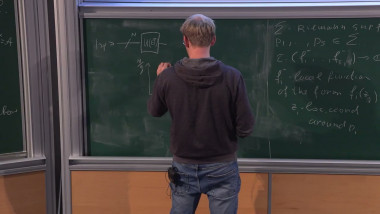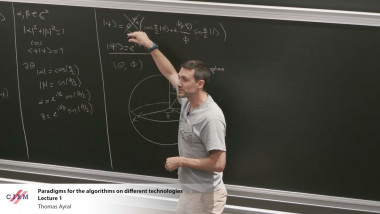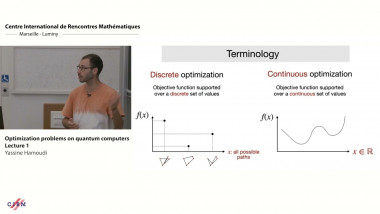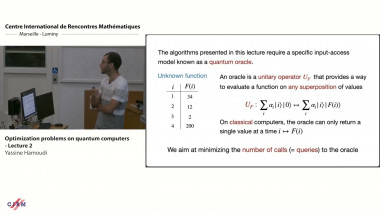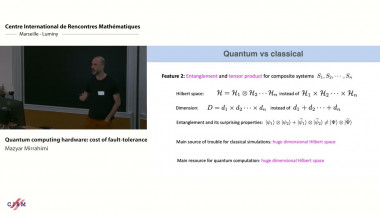Appears in collection : Random Tensors / Tenseurs aléatoires
The term Tensor Network States (TNS) has become a common one in the context of numerical studies of quantum many-body problems. It refers to a number of families that represent different ansatzes for the efficient description of the state of a quantum many-body system. The first of these families, Matrix Product States (MPS), lies at the basis of Density Matrix Renormalization Group methods, which have become the most precise tool for the study of one dimensional quantum many-body systems. Their natural generalization to two or higher dimensions, the Projected Entanglement Pair States (PEPS) are good candidates to describe the physics of higher dimensional lattices. They can be used to study equilibrium properties, as ground and thermal states, but also dynamics.
Quantum information gives us some tools to understand why these families are expected to be good ansatzes for the physically relevant states, and some of the limitations connected to the simulation algorithms.
Originally introduced in the context of condensed matter physics, these methods have become a state-of-the-art technique for strongly correlated one-dimensional systems. Their applicability extends nevertheless to other fields.
These lectures will present the fundamental concepts behind TNS methods, the main families and the basic algorithms available.
